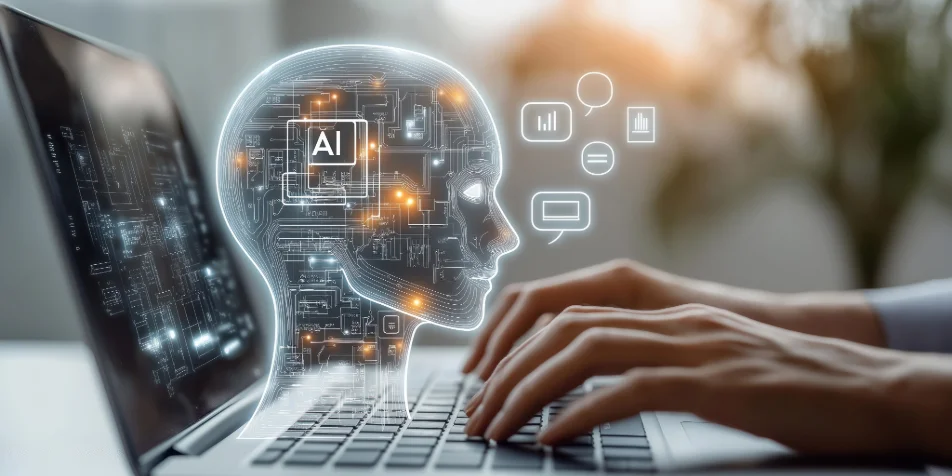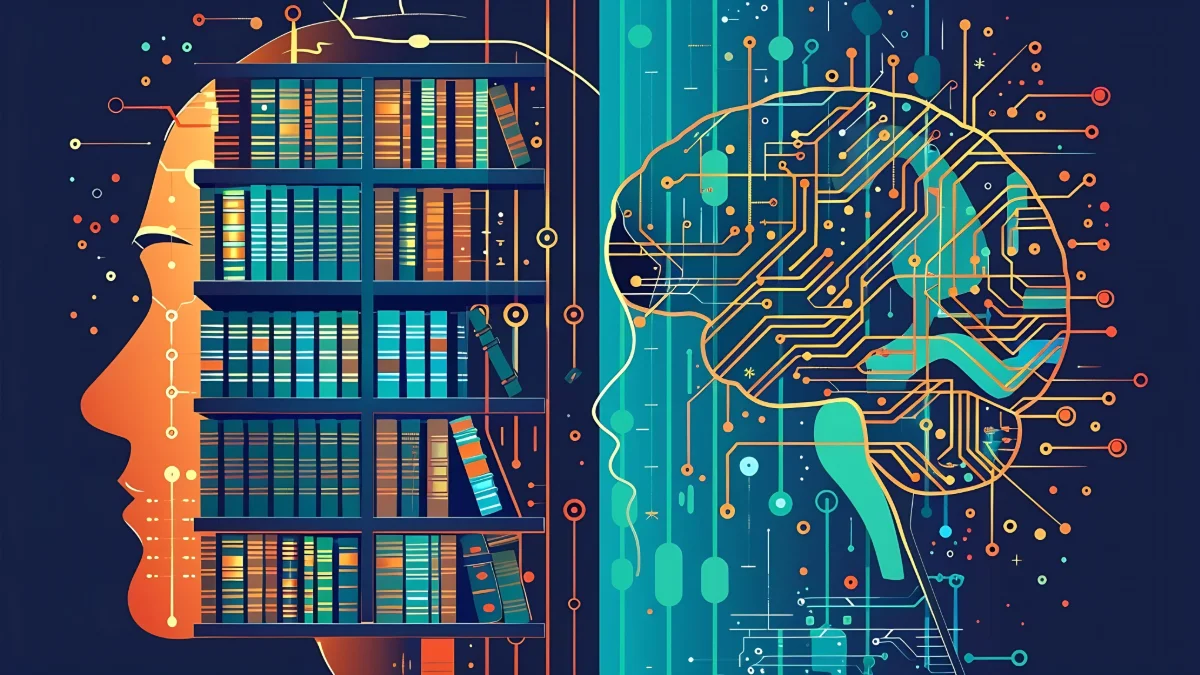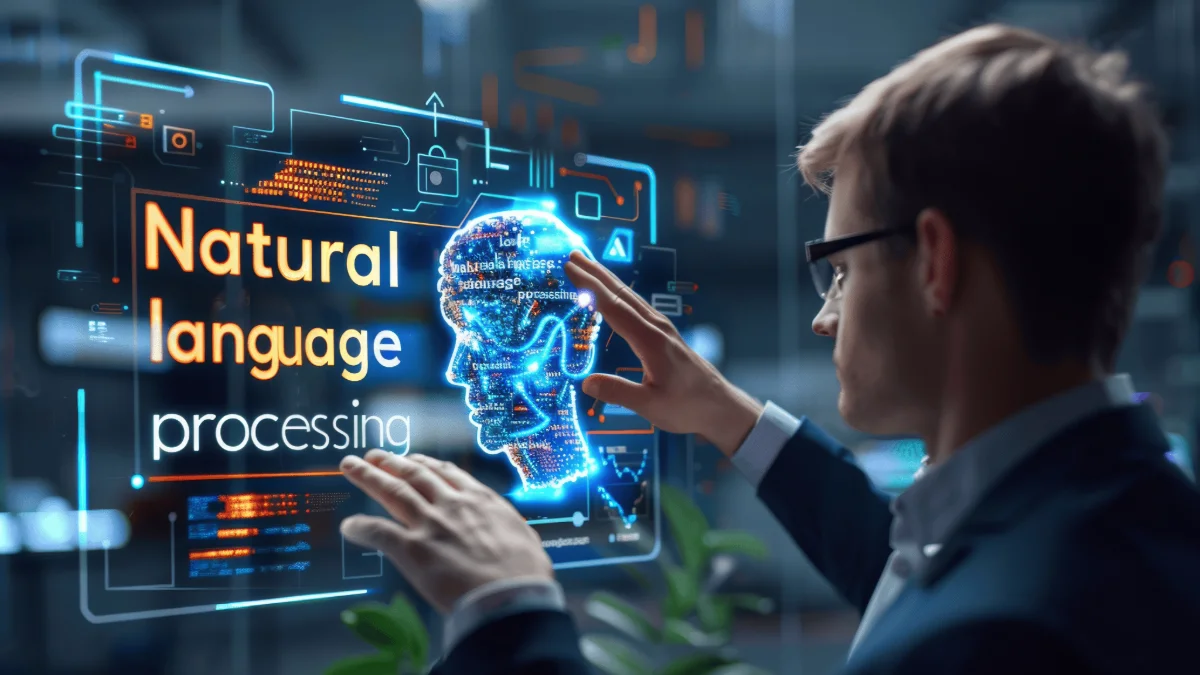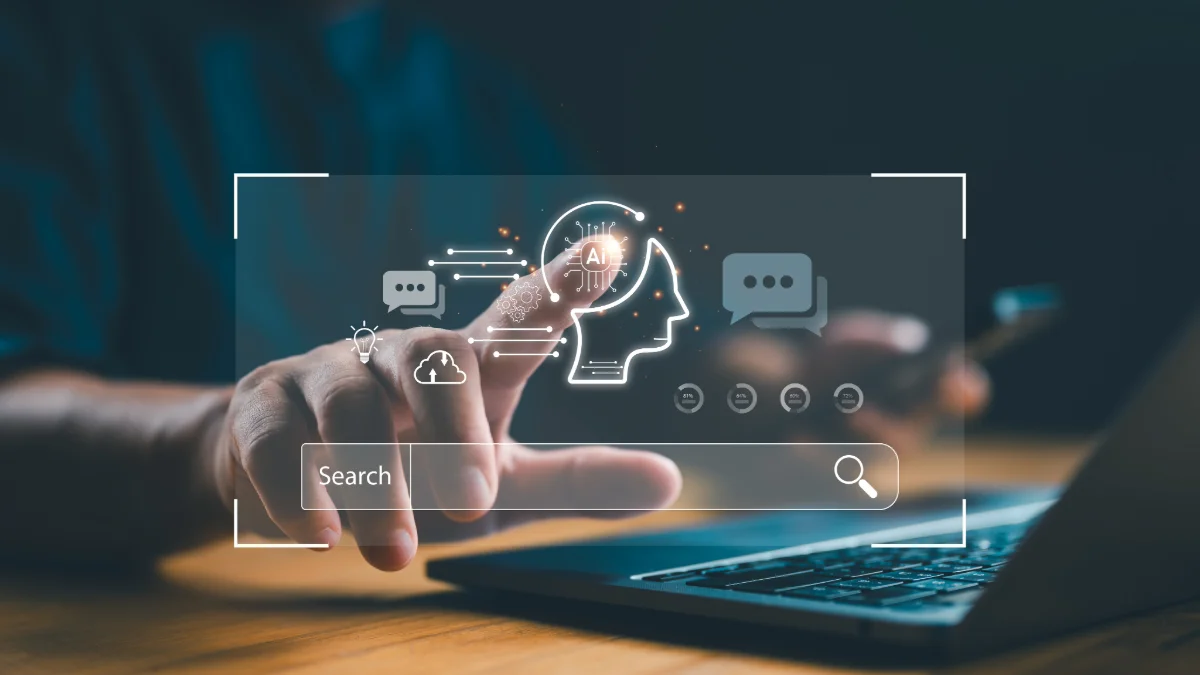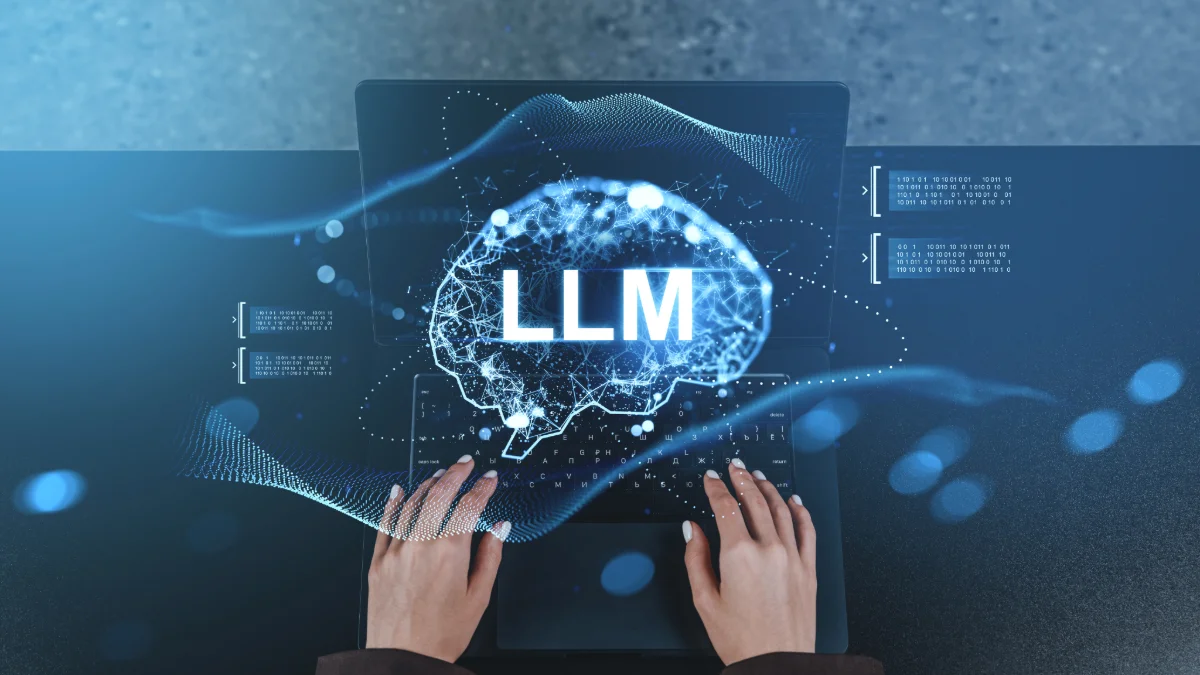1.
What Is Artificial Intelligence?
In recent years, one of the most talked-about concepts in business and technology has undoubtedly been artificial intelligence. However, defining this concept merely as “systems that mimic human intelligence” has become insufficient. For the business world, AI has emerged as a transformative force—impacting everything from operational processes to customer experience, strategic decision-making to innovation. Today, the question “What is AI?” is directly tied to competitive advantage. That's why we've explored everything you need to know about AI with a strategic lens focused on its role in business. Enjoy the read!
Artificial Intelligence (AI) refers to the simulation or replication of cognitive abilities—such as learning, reasoning, problem-solving, perception, and decision-making—by computer systems. Unlike traditional software that follows predetermined rules, AI technology is built upon algorithms that learn from data, evolve, and adapt to changing conditions. Therefore, AI is not a fixed, rule-based program; it’s a dynamic system that learns from experience, recognizes patterns, and makes predictions based on those patterns. From a business perspective, the most critical aspect of AI is its ability to process data at speeds and volumes far beyond human capacity and generate meaningful insights.
2.
What Do AI Applications Mean for Businesses?
AI applications provide strategic value to businesses. AI enables operational efficiency, scalable growth, and data-driven decision support. In terms of efficiency, automating repetitive tasks allows employees to focus on more creative and strategic activities. For example, AI can handle invoice verification in finance departments or answer frequently asked questions in customer support. This allows human resources in those departments to focus on innovation and value creation. AI also plays a significant role in decision-making by extracting actionable insights from massive data sets, helping executives make faster and smarter decisions. The takeaway: AI not only helps businesses “work better” but enables them to work smarter.
3.
How Is AI Used in Business?
While for individuals, using AI might be as simple as launching an app, for businesses it requires a far more strategic approach. AI is not just a piece of software—it’s a transformative tool that integrates data, algorithms, and infrastructure into business processes. Here's how businesses can implement AI step-by-step:
Data Collection and Preparation
Data is the most essential raw material for AI. Businesses can collect and organize data from sources like customer interactions, sales records, production processes, or IoT sensors to feed AI algorithms. Your first step in leveraging AI algorithms is to identify and structure relevant data and determine which business processes can be optimized with AI technology.
Utilizing Cloud-Based AI Services
If you're looking to leverage AI technologies without large capital investments, cloud-based AI services are a great option. Without investing in hardware, you can utilize ready-made AI solutions provided by cloud service providers. For instance, services for natural language processing (chatbots), image recognition (quality control), and predictive analytics (demand forecasting) can be quickly deployed. Accelerate your company’s digital transformation with GlassHouse Cloud Services.
Integration into Business Processes
AI only generates real value when integrated into existing systems. For example, an AI module embedded in a CRM can predict purchase likelihood, while a model connected to an ERP system can automatically optimize inventory levels. Strategic integration with clean data is critical to success.
Starting with Pilot Projects
Instead of pursuing large-scale transformations from the start, businesses should begin with small, measurable AI pilot projects. This allows for quantifiable ROI and supports smoother employee adaptation.
Monitoring and Iteration
AI systems are not static; they continuously learn and evolve. Therefore, businesses should regularly evaluate model performance, update algorithms as needed, and conduct ethical and compliance checks.
Core AI Applications in the Business World
The benefits of AI adoption are visible across nearly all industries through real-world use cases:
- Customer Experience: Brands can provide faster and more personalized service via intelligent chatbots and automated support systems.
- Supply Chain: AI-based forecasting algorithms reduce waste and ensure supply continuity.
- Cybersecurity: Real-time threat detection with AI systems helps protect digital assets. Consider modernizing your network infrastructure with GlassHouse’s Network and Security Solutions.
- Human Resources: AI tools can analyze candidate profiles objectively, reducing bias and speeding up recruitment processes.
- Logistics: AI-driven route optimization improves delivery speed.
- Finance: Fraud detection through anomaly recognition becomes possible.
- Manufacturing: Predictive maintenance can be achieved via machine sensor data.
- Retail: E-commerce platforms can recommend products based on user shopping history.
4.
The Powerful Synergy Between AI and Cloud
Cloud services are what make scalable AI accessible to businesses. Building AI infrastructure using traditional methods often requires high hardware and maintenance costs. But with cloud-based AI services, businesses can access pre-built AI models without investing in infrastructure. They can customize models with their own data and operate under a pay-as-you-go model. This allows even small and medium-sized businesses to compete with large enterprises. With GlassHouse’s AIOps-Enabled SAP BASIS Management, let our experts handle your infrastructure—automate repetitive tasks and audit your SAP BASIS systems with AI-driven controls.
5.
Future Outlook: How Will AI Shape the Future?
Looking at the future of AI, it’s clear that the influence of AI algorithms on businesses will only intensify. Predictive business models, autonomous systems, and personalized experiences will redefine competitive landscapes. The best approach for companies is not to wait for large transformations but to start with pilot projects, treat data as a strategic asset, and improve AI literacy among employees. These steps will help future-proof businesses for AI-driven business models.
6.
Frequently Asked Questions
Who invented AI, and what’s its history?
AI is not the invention of a single person but the result of interdisciplinary work across computer science, mathematics, philosophy, and engineering. However, the term “Artificial Intelligence” was first coined by John McCarthy in 1956. Pioneers like John McCarthy, Marvin Minsky, Claude Shannon, and Herbert Simon established AI as an official research field at the Dartmouth Conference. Initial experiments took place in the 1960s and 1970s.
Where is AI used?
AI is now at the heart of daily life and modern business. For companies, AI is embedded in customer experience, marketing, sales, CRM, manufacturing, finance, healthcare, logistics, HR, and more. In our daily lives, AI is in smartphones, social media, e-commerce, banking apps, and even home devices. In short, AI is integrated into nearly every aspect of life.
Which jobs will AI replace?
The question of which professions are at risk due to AI has long been debated. It’s accurate to say that AI will transform repetitive, rule-based tasks. However, instead of eliminating jobs, this transformation is expected to shift workers toward more creative, strategic, and human-centered roles.
What types of AI are there, and what are their functions?
| Type of AI |
Function |
Business Benefit |
Examples |
| Narrow AI |
Performs specific tasks |
Automates repetitive tasks, improves efficiency |
Chatbots, recommendation engines, spam filters |
| General AI |
Understands and performs human-level tasks (still under development) |
Strategic decision-making and problem-solving in the future |
Human-like decision-making across business processes |
| Machine Learning |
Makes predictions and classifications from data |
Enables fast, data-driven decisions and reduces risk |
Sales forecasting, demand planning, fraud detection |
| Deep Learning |
Analyzes complex data |
Extracts insights from large data sets |
Facial recognition, autonomous vehicles, voice assistants |
| Natural Language Processing (NLP) |
Understands and processes human language |
Automates communication and extracts insight from text |
Chatbots, translation, sentiment analysis |
| Computer Vision |
Analyzes and interprets visual data |
Reduces operational errors, enhances security, speeds up processes |
Quality control, surveillance, self-driving vehicles |
To conclude, artificial intelligence is no longer an “option” for businesses—it’s a requirement for staying competitive. If you found this content useful, you might also enjoy The Importance of Digital Transformation in Businesses.
